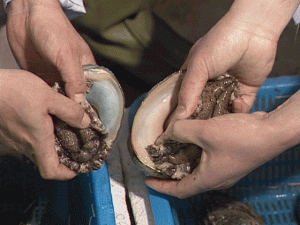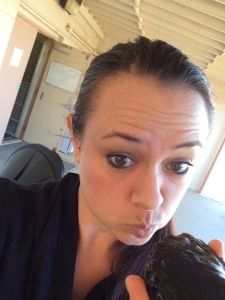Recap: I am a Master of Science (and the Universe, according to my nephew when he wants the tickle attacks to stop), and my experiments in the intertidal were mostly successful, except for the live spawning attempt. Again, to validate my project design and strengthen my simulated spawning results, we tried a second live spawning experiment at the end of last year before the permits expired…
San Nicolas Island is one of my favorite places on earth, if you haven’t picked that up from my previous posts. I feel incredibly blessed to have the unique opportunity to venture back, even after my schooling is complete. I was plotting ways to get back to SNI, thinking of leveraging my experience on the island and in the intertidal to get a volunteer position with another group, when I got an email from Glenn that we were on for another live spawning experiment, and they would like me to be involved. I didn’t even need to think about it before quickly replying, a hearty and enthusiastic “YES! When do we leave?”
Withering syndrome is still a concern, even though it doesn’t appear to be as virulent as it was in the 1990s during its initial appearance on the island. Although the disease presence has been documented on the island, the conservative approach to preventing further spread of withering syndrome dictates using only disease free animals. The last spawning experiment involved naïve animals that were never exposed to the disease. However, the difficulty we experienced spawning the larger animals and the learned knowledge that smaller animals are more gravid and easily spawned encouraged us to get younger red abalone. To stay within the permit guidelines and only bring disease free animals to the island, the thirty red abalone we got for the experiment had to be treated with oxytetracycline (OTC), a broad spectrum antibiotic active against many types of bacteria, including rickettsiales.

Ripe female abalone (left) and male abalone (right) (http://www.lib.noaa.gov/retiredsites/korea/main_species/abalone.files/fsdyh004.gif)
The most ripe red abalone with bulging gonads were hand-picked by an abalone expert, Jim Moore, to improve our odds of a successful experiment. Unfortunately, the OTC treatment is rather stressful, and involves the abalone sitting in a series of eight baths for 24 hours each over the course of three weeks. During this time, the horny little abalone reabsorb their gametes, or may spawn in response to the stress. To reduce their stress and hopefully maintain fuller gonads, the abalone were fed during the treatment. They were allowed to recover for an additional three weeks after treatment concluded, and we hoped it would be enough.
Armed with a greater number of smaller abalone and knowledge from what led to failed experiments previously, we headed out to the island. I think I inadvertently cursed myself after my last blog, Failure in the Field:
It is common for the first, and even the second field experiment to not work. Unfortunately, I had everything riding on this one spawning release. There were many things I learned from this venture, the most obvious being to mix the iodine into the Lugol’s solution before adding it as a preservative to the eggs (duh). I also later learned that the larger abalone are more difficult to spawn, and more successes are achieved with younger, smaller abalone.
In this second field experiment, I was in no way about to be in charge of the Lugol’s solution, and we brought formalin as a back-up preservative, just in case something else went wrong. It’s science, and “things going wrong” is the name of the game.
We set up the abalone in the temporary housing outside the archeological labs and storage, and less than a mile from a good release location at Site 2. The plan was to spawn the abalone in the comfort of civilization, near electricity and running water, then take the gametes down to the experimental site, run the experiment at Site 2, and transport the canisters back to the lab where we would distribute eggs among the transportable tubes and add preservative. That was the plan.
Now we just need the little buggers to spawn! We added the sexy cocktail of Tris and hydrogen peroxide, ran down to quickly set everything up, and then waited… and waited… and waited… When the tide started coming back in, and only one female had spawned a small amount of eggs in 6 hours, we decided to call it a day. We put them all back in their temporary tank, and prepared to try again the next day.
Unfortunately, we were out of 6% hydrogen peroxide. Luckily, someone thought ahead and brought back-up 3% hydrogen peroxide, purchased for $0.89 a bottle at the local pharmacy. We doubled up the dose to try, try again. Feeling slightly less optimistic, but still hopeful, we tried all the tricks we had learned in our combined spawning experiences and reading: temperature stress (exposure to sunlight to increase water temperature to 20°C in their 3L buckets, then water changes to bring the temperature back to 14°C); mechanical stress (EARTHQUAKE! Shaking the buckets, tapping the buckets, mainly just agitating the poor abalone); musical stimulation (Barry Manilow, Madonna, Bruno Mars, Rhianna and Brittany – don’t judge! It worked last time, and I was willing to try anything). Our efforts were rewarded with some stressed out abalone that released several mucus plugs and poop, and appeared to want to spawn but had nothing to give.
Our conclusion: they hadn’t had enough recovery time after the OTC treatment. Next steps include renewing the permits, applying for grants, and praying that the third try does the trick. On the bright side, I get to go to the island at least one more time. Can’t complain about that!

